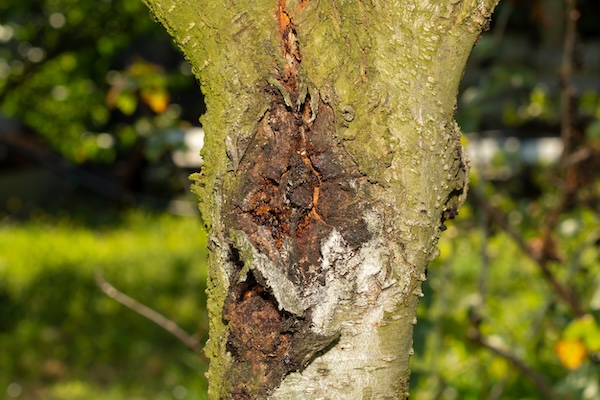Common Tree Diseases in Phoenix: Symptoms & Treatment
Why Tree Diseases Are a Big Concern in Phoenix
Phoenix trees face unique challenges due to the region’s extreme heat, seasonal monsoons, and pest infestations. These conditions create an ideal environment for fungal diseases, bacterial infections, and tree pests to spread rapidly, causing severe damage. If left untreated, even mature trees can experience premature defoliation, structural weakness, or death. Recognizing the early signs of tree disease is critical to protecting your investment and avoiding costly removals.

The Most Common Tree Diseases in Phoenix
Palo Verde Borer Beetle
One of the most destructive tree pests in Arizona, this beetle burrows into the wood of Palo Verde trees, causing severe damage internally. Symptoms include yellow spots on leaves, sawdust around the base, and small holes in the trunk. While light infestations can be treated with pruning and insect treatments, advanced cases may require tree removal to prevent further spread.
Sooty Canker
A common fungal disease, Sooty Canker, thrives in trees under stress from drought or improper care. Homeowners should look for black, soot-like patches on bark, cracks that ooze sap, and dying branches. Effective treatment includes removing infected limbs and improving soil health.
Texas Root Rot
This is one of the most dangerous conditions for Phoenix trees, attacking at the root level and often leading to sudden death during the late summer heat. Unfortunately, there is no cure. Trees with Texas Root Rot display yellowing leaves, wilting, and overall decline. The best approach is removal to prevent the spread to nearby plants.
Verticillium Wilt
Another fungal issue, Verticillium Wilt, disrupts a tree’s ability to transport water, resulting in light green or yellow-green spots, stunted growth, and dead branches, often on one side of the tree. While this disease cannot be fully cured, pruning infected limbs and applying soil amendments can help prolong tree life.
Bacterial Wetwood (Slime Flux)
Wetwood creates dark, wet spots on trees and sometimes produces a foul odor. Although there’s no chemical cure, consistent watering and good care help the tree recover.
Other common issues in Arizona include Leaf Rust, Maple Tar Spot, Leaf Blister of Oak, and Pine Needle Diseases, which often cause spots on trees and foliage damage during the growing season.
Warning Signs You Should Never Ignore
Watch for symptoms such as:
- Yellow or discolored leaves
- Wilting or leaf blight
- Cracked, damaged bark
- Brittle or dead branches
- Orange bumps filled with spores or unusual leaf spots
If you notice these signs, quick action can prevent severe damage and reduce the cost of treatment.
How to Treat and Prevent Tree Diseases
Most tree diseases and fungal infections can be managed through proper care, which includes timely pruning, improving soil health, using eco-friendly pest control, and monitoring moisture levels. For severe conditions like Texas Root Rot, tree removal is often the only solution.
Prevention is key. Water trees properly (avoiding both overwatering and drought stress), trim regularly after storms, and schedule annual tree health inspections. Following USDA Forest Service guidelines for disease prevention can help keep your trees thriving.
Why Call Chips Tree Service?
At Chips Tree Service, we understand the unique challenges of tree care in Phoenix, AZ. Our certified arborists provide:
- Free tree disease assessments
- Professional pruning and trimming
- Safe, effective pest and disease treatments
- Tree removal when necessary
We’ll create a customized care plan that safeguards your landscape and boosts curb appeal.
Call today for a free inspection and let us help your trees stay healthy year-round! Schedule Your Tree Health Check Now
